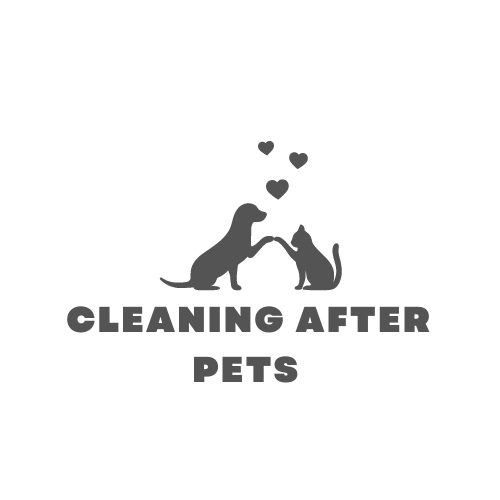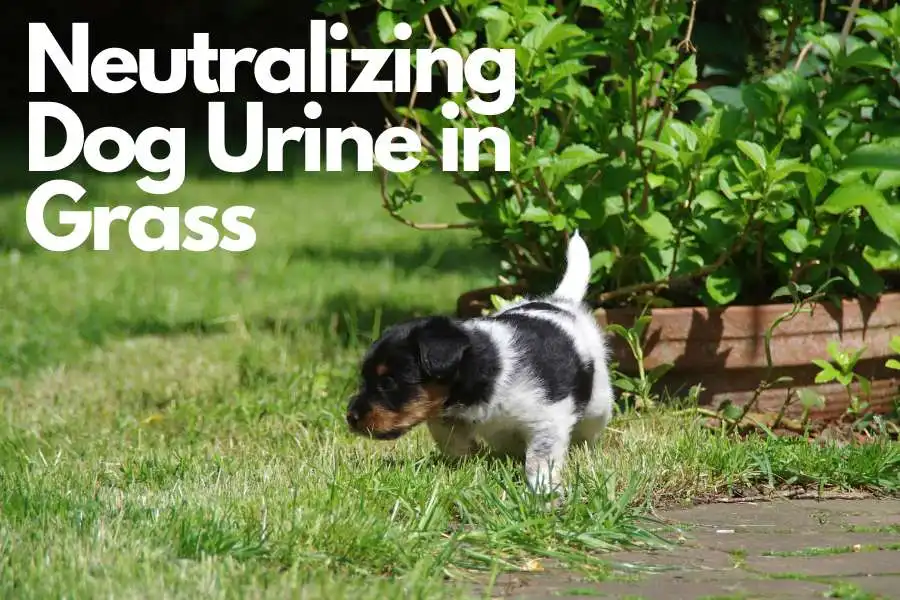If you’re a dog owner, you know how frustrating it can be to see patches of dead grass in your lawn caused by your furry friend’s urine. Not only is it unsightly, but it can also be costly to repair. Luckily, there are ways of neutralizing dog urine in grass and preventing the pee from killing your lawn.
Understanding Dog Urine and Grass Damage

Dog urine has a high nitrogen content, which can burn and kill grass if concentrated in one area. When dogs repeatedly urinate on the same spot, the nitrogen and salts accumulate, leading to the formation of brown, dead patches on the grass as the leaves die.
Typically, the brown patch is surrounded by a halo of darker green grass. With the concentration of nitrogen and other salts diminishing as you reach the urine spot’s periphery, the nitrogen fertilizes the grass without burning the leaves. As such, it is common to find a ring of rapidly growing, dark green grass surrounding the dog’s urine spots.
Additionally, the root system remains fairly intact. When the brown patch is caused by dying grass, the roots remain secure. You can test this by pulling the grass.
Aside from the excessive amount of nitrogen, dog urine can also be acidic, which can cause damage to the soil and further harm the grass. The typical dog urine pH level ranges between 6 and 7.5 for most fogs.
That said, you can often expect your dog to have acidic pH levels if it’s healthy. Otherwise, high pH dog urine may indicate your dog has a Urinary Tract Infection. Urease-producing bacteria in the urinary tract convert urea to ammonia, increasing the dog’s urine pH levels.
You should also expect an increased potential for female dogs, which are “squatters,” to cause brown spots. However, male dogs (especially when they’re young) also squat when in the comfort of their space, which, in this case, is your yard. Dog spotting on lawns is not a preserve of female dogs.
Finally, dog spotting is common with dog breeds that grow large. Larger dogs tend to produce more urine and urinate more frequently than smaller dogs. As such, urine produced by large dogs has a higher potential to burn grass than urine produced by smaller dogs, depending on the amount of urine produced.
However, small dogs can also kill grass. If your Shih Tzu, Yorkshire Terrier, pug, or Chihuahua pees on the same spot every time, the concentration of nitrogen and salts on that spot will increase significantly, killing the grass.
In all cases of dog pee browning your lawn, it’s essential to neutralize dog urine in the grass.
Identifying the Problem Areas
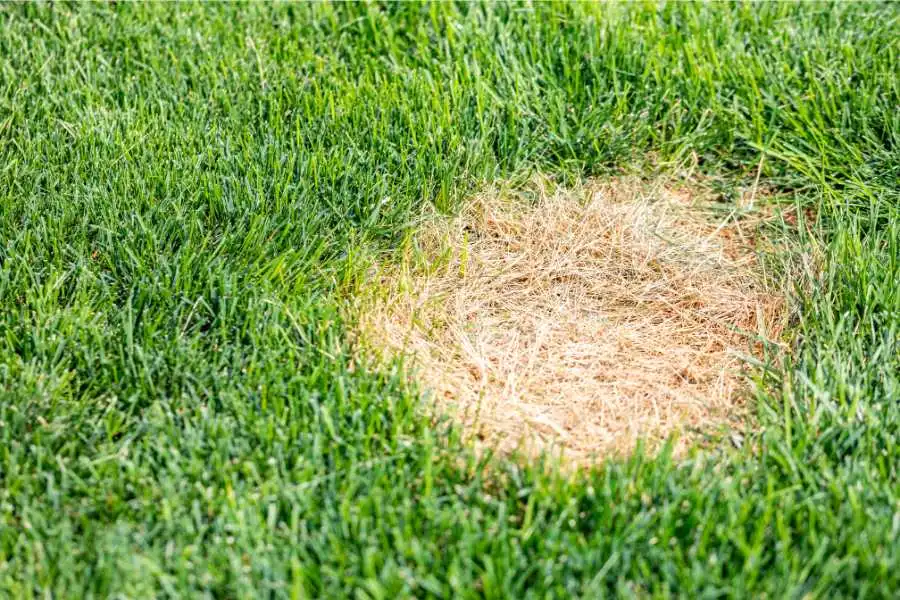
The first step to neutralizing dog urine in the grass is identifying the problem areas. Look for brown, dead patches of grass in your lawn, especially in areas where your dog frequently urinates.
In most cases, you will not be present when your dog sprays or goes on bathroom breaks on your lawn. As such, identifying fresh urine spots might not be a straightforward endeavor.
In such cases, walk around your yard and do a sniff test. Since dog urine is quite strong, especially when it starts to break down, you can readily sniff its presence. You’ll notice a strong odor of ammonia where there is fresh urine.
Once you’ve identified the problem areas, you can start taking steps to neutralize the urine and prevent further damage to the grass. Below are some of the best ways to stop dog urine from killing grass naturally.
How To Neutralize Dog Urine in Grass
Several natural remedies and commercial products can neutralize dog urine in the grass. Here are some effective methods to consider:
Watering The Affected Area
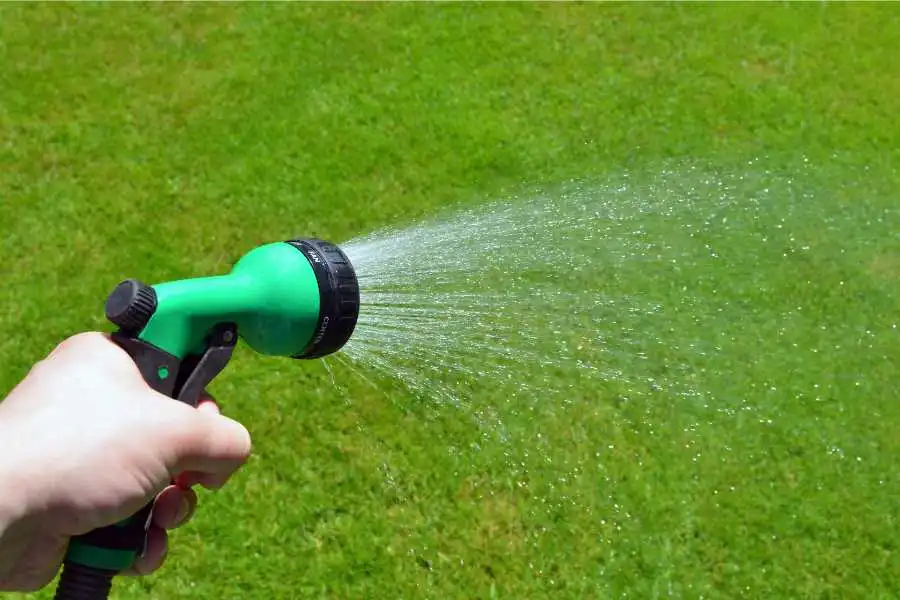
After identifying the approximate location of fresh urine, immediately water the spot to neutralize dog urine on your lawn. Pay careful attention to any foaming as you water the lawn.
The foaming is indicative of a urine spot. Drenching the area with water can dilute the urine and prevent it from burning the grass. Watering the area can also help flush out the excess nitrogen from the soil.
Also, water all the brown, dead patches thoroughly. Drenching the brown patches helps remediate the soil, making it possible for grass to grow there again.
It’s not always the case that your dogs are the culprits for the browning of your lawn. Your neighbors’ dogs might use your lawn as their potty spot, especially on your front lawn. If that is the case, you can use motion-activated impact sprinklers to deter the dogs from using your lawn to relieve themselves.
This is one of the best and most humane ways to deter dogs from peeing on your lawn.
Dogs have one superpower-the power of smell. Their olfactory senses are highly developed and sensitive to smells. As such, they’ve developed instinctive social behavior that takes advantage of their superior olfactory abilities.
For instance, male dogs’ urine marks objects in their surroundings, typically vertically, to mark their territory. They will occasionally remark on these spots to renew their unique olfactory mark.
Hosing everything in your yard with water will quickly wash away their olfactory mark, which may stress them.
Consequently, they may mark more often in different parts of your yard, including the lawn. To counter this, give your male dog vertical surfaces they can mark freely, such as a pot plant around their designated potty space.
Dog Urine Neutralizer For Lawn Protection
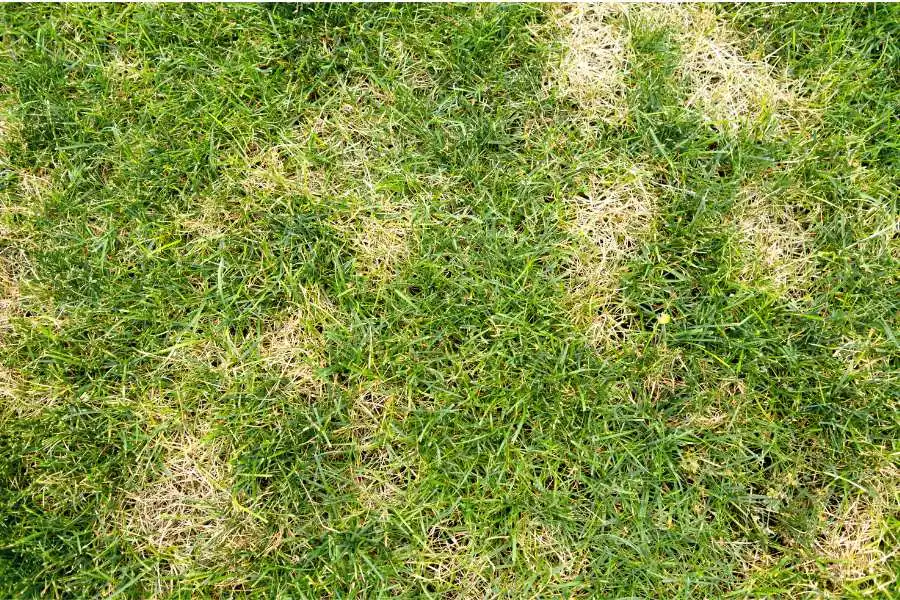
Watering the dog urine will do your lawn a world of good by protecting it from browning. However, you can also try commercial dog urine neutralizers for lawns, such as the Dog Urine Neutralizer for Lawn Protection. It neutralizes the excess nitrogen and salts introduced to the soil by the dog urine without affecting the effectiveness of your lawn fertilizer.
Enzymatic Cleaners (NaturVet – Yard Odor Eliminator Urine Odors from Lawn and Yard)
Enzymatic cleaners are commercial products that break down the proteins in dog urine and neutralize the odor. Apply the cleaner to the affected area and follow the manufacturer’s instructions.
Balance The Soil pH With Home Supplies
It’s safe to assume that your dog’s urine is acidic. After all, a healthy dog will most likely produce slightly acidic urine. Nonetheless, you can test the soil to determine whether you need to neutralize it with an acidic or alkaline compound.
Use the Soil Moisture Meter and pH Meter to measure the soil pH.
Applying Baking Soda, Lime, or Diatomaceous Earth For Acidic Urine
Baking soda and garden lime are alkaline substances that can help neutralize the acidity in dog urine. Sprinkle a small amount of baking soda or lime on the affected area and water it thoroughly.
Using Vinegar Or Lemon Juice To Neutralize The Alkaline Urine
Vinegar and lemon juice are acidic substances that can counteract the alkaline properties of dog urine. Mix equal parts of water and vinegar or lemon juice and apply it to the affected area.
It’s important to note that many home supplies will not be 100% effective in neutralizing the soil when used with water. Ultimately, the best action is to use a homemade neutralizing substance (such as garden lime) with plenty of water on the brown spot to dilute and spread the nitrogen.
Will Grass Grow Back After Dog Urine? Patching Bare Spots In Your Lawn
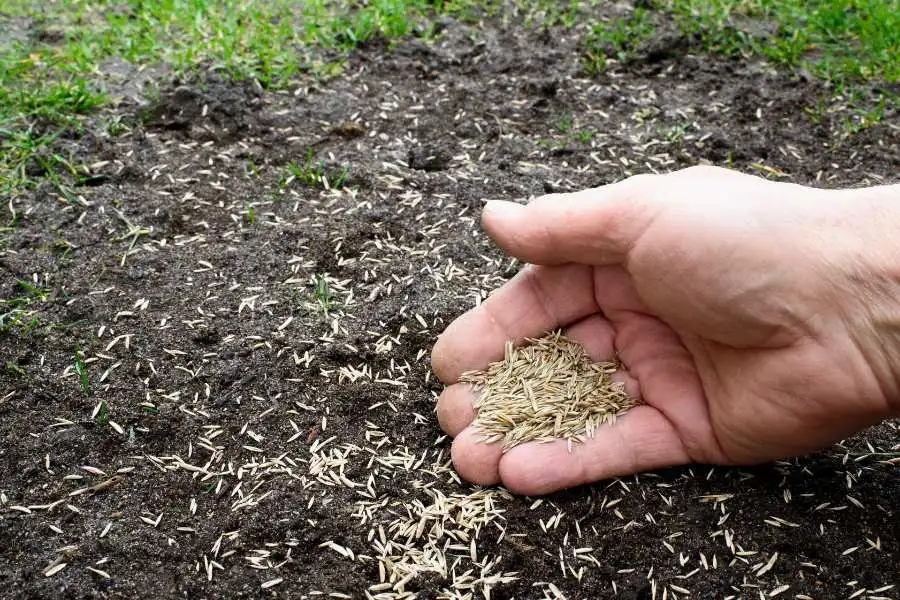
So, will grass grow back after dog urine? To give you a frank answer; Yes. With the right steps and care, you can get grass to grow in bare spots. In this comprehensive guide, we will show you how to repair your lawn after dog urine damage and get your grass looking lush and green again.
You Might Also Want To Learn How To How To Get Dog Poop Out Of Carpet Naturally
How To Get Grass To Grow Where Dog Pees
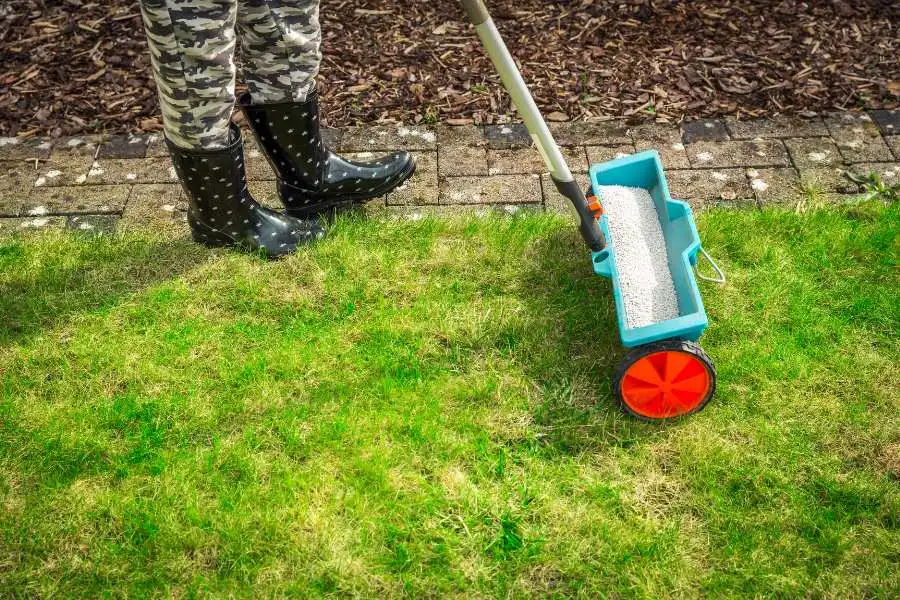
If your lawn has been damaged by dog urine, don’t worry. With the right tools and techniques, you can repair the damage and get your grass to grow back. Here are some steps to take:
Step #1: Remove The Dead Grass
Use a dethatching rake to remove any dead grass from the affected area. This will make it easier to plant new grass seed.
Step #2: Prepare The Soil
Loosen the soil in the affected area using a garden fork. This will help the new grass seed take root. You can also add a layer of topsoil to improve the soil’s quality.
Soil amendments, such as compost, gypsum, or top soil, can help neutralize dog urine in the soil and improve the grass’s health. This will enhance the odds of your grass recovering from browning.
Ensure you aerate the soil before reseeding the brown patches using a grass seed spiker like the Yard Butler Manual Lawn Coring Aerator.
Step #3: Select The Right Grass Seed
Choose a grass seed that is suitable for your climate and soil type. You can consult with a local gardening expert or use an online tool to help you select the right seed. Moreover, while you choose grass seed, keep in mind that different types of grass have different levels of resistance to urine.
Warm-season grass such as Bermuda grass, St. Augustine grass, and zoysia grass are more resistant to dog urine than others.
On the other hand, if you have a cool-season lawn, try Kentucky bluegrass, perennial ryegrass, fine fescues, and tall fescues, which are more resistant to pet urine.
Planting these types of grass in your lawn can help prevent urine
Step #4: Determine The Seeding Rate
The seeding rate will depend on the size of the bare spot and the type of grass seed you are using. Consult the seed packaging for guidance on the proper seeding rate for the best result.
Step #5: Plant Urine-Resistant Grass Seed
After preparing the soil and choosing the right seeds, plant the grass seed over the affected area. Reseed the now bold lawn patch with new seeds.
You can use a seed spreader to ensure even distribution. The Scott EZ Seed Dog Repair is an effective grass reseeding option for those brown patches. Another option is the Scotts Turf Builder THICK’R Lawn.
Step #6: Water The Area
Water the newly seeded area regularly to keep the soil moist. This will help the grass seed to germinate and grow.
Step #7: Fertilize The Area
Once the grass has started to grow, you can fertilize the area to promote healthy growth.
Step #8: Monitor The Area
Keep an eye on the newly seeded area and watch for signs of growth. If the grass is not growing after a few weeks, you may need to reseed the area. Importantly, keep your dogs away from the reseeded patch to ensure it does not affect the young grass.
Painting Grass Green
Only paint the lawn if you’re in a rush to fix it up and need quick solutions, such as when preparing to host a garden party. While lawn paint is safe for kids and pets, it’s not long-lasting. Additionally, lawn paint is most effective if the browning is not too far along and there are no bald patches.
A 5.5 gallon of Lawnlift Ultra Concentrated (Green) Grass Paint is enough to paint up to 2,000 sq. ft. of brown spots.
How To Stop Dog Urine From Killing Grass Naturally
While neutralizing dog urine in the grass is essential, it’s also important to prevent urine damage in the first place. Here are some natural ways to stop dog urine from killing grass:
Training Your Dog To Urinate In Designated Areas
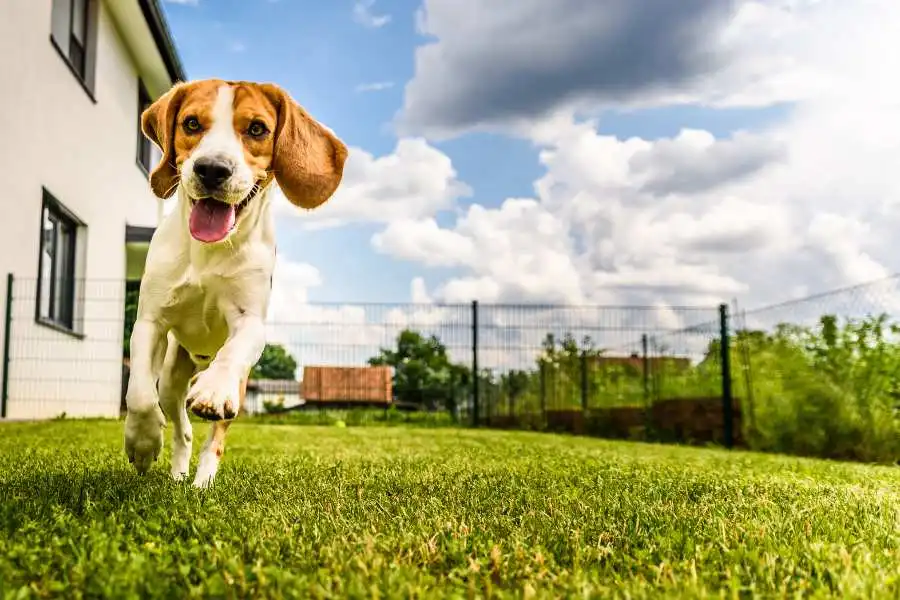
A long-term solution is to designate a specific area in your lawn where your dog can urinate. This will concentrate the nitrogen in one area and prevent damage to the rest of the lawn.
A good way to do this is to construct a spacious dog run for your furry friend lined with rocks, mulch, or fake grass. However, you can purchase the Petorldog Dog Playpen from Amazon and customize it to create a potty space for your dogs.
For instance, consider adding pots with urine-resistant plants around the potty area for the dog to mark. After that, you can start consistent and force-free training to train your dog(s) to use their potty area.
Teaching your dog to pee and poo in a specific area (in this case, its dog runs) requires commitment and confidence, though it is not arduous.
Most potty-trained dogs consider all grassy areas suitable for relieving themselves, which can make the potty-training process more challenging, but that is not something you cannot overcome.
Dogs generally prefer soft and absorbent surfaces for potty time, and your lawn has these characteristics. Both male and female dogs are inclined to choose areas with tall grass for urinating and defecating. Male dogs are also drawn to vertical surfaces to mark their territory.
To ensure that your dog urinates in one designated spot, you must follow four essential rules:
- No Unsupervised Potty Breaks – The first and foremost rule for training your dog to urinate in one spot is always to supervise it. Allowing your dog to roam freely in the backyard without supervision will not help you advance.
- Use a Leash to Guide Your Dog to the Designated Potty Spot – Every time your dog needs to relieve itself, take it to the designated potty area using a leash. This will help guide your dog to the correct spot, ensuring it doesn’t choose another area to relieve itself.
- Don’t Allow Freedom Until Your Dog Has Completed Its Business – Remain in the potty area until your dog has urinated or defecated. You can then reward it with some freedom. Many dogs do not immediately urinate when you let them outside, so it’s best to take them to the potty spot and wait a while.
- Reward your Dog When it Urinates in the Designated Spot – If it urinates in the correct spot, reward it with a treat and allow it some off-leash time or a walk. It’s important to offer your dog fun activities, such as walks or playtime, after it has urinated in the designated spot. Always clean up the defecation and maintain the designated potty spot. Eventually, your dog will learn to go to the spot independently without a leash.
Remember to offer rewards to your dog for good behavior. With patience and consistency, your dog will learn to urinate in one spot, making your life easier and cleaner.
Once the dog gets into a routine of using the area, you can hose it down once daily to mitigate the accumulation of nitrogen, urea, ammonia, and other compounds in dog urine. Importantly, you’ll mitigate the tide of dog pee killing the grass around your home.
Increasing Your Dog’s Water Intake
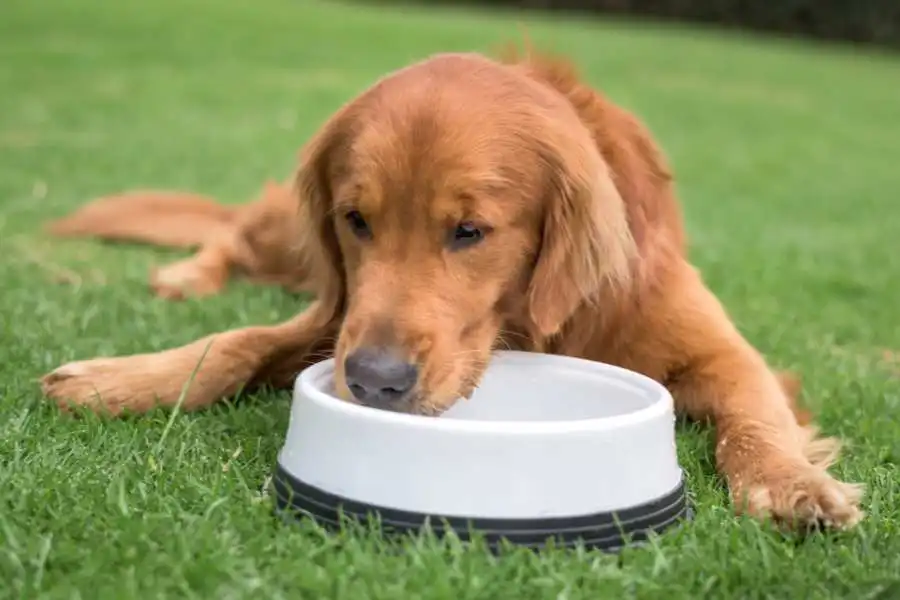
Encourage your dog to drink more water, diluting the urine and reducing nitrogen concentration. Additionally, more fluid intake will enhance your dog’s health considerably.
Reddit’s take on reducing the concentration of nitrogen also involves adding dog rocks in your dog’s water to filter out impurities that might increase nitrogen concentration.
Altering Your Dog’s Diet
Generally, highly processed dog food contains a high concentration of processed proteins. A dog on off-the-shelf processed dog foods tend to produce urine with high nitrogen content. A better alternative is to prepare your dog home-cooked food.
However, you can try fresh dog food brands if you cannot cook for your dogs.
Raise Your Mowing Height
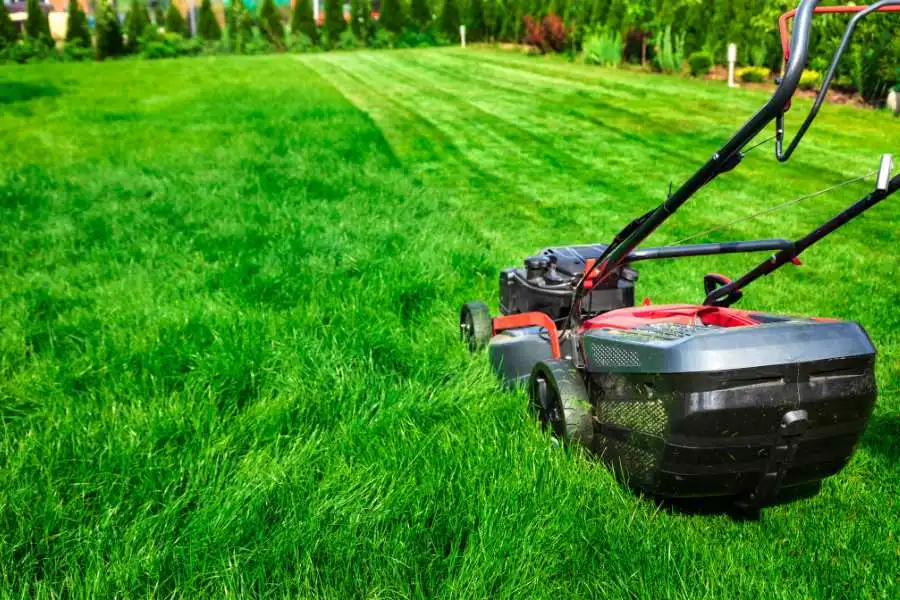
You can also enhance your lawn’s tolerance to dog urine by raising the mowing height. Taller grass also features deeper roots, which are less sensitive to the increased concentration of nitrogen.
Plant The Right Grass Varieties
The more resistant your lawn is to urine damage, the less of an issue browning will be. Ensure you plant urine-resistant grass, such as those mentioned above, that can better endure the high nitrogen concentration in dog urine.
Use A Leash
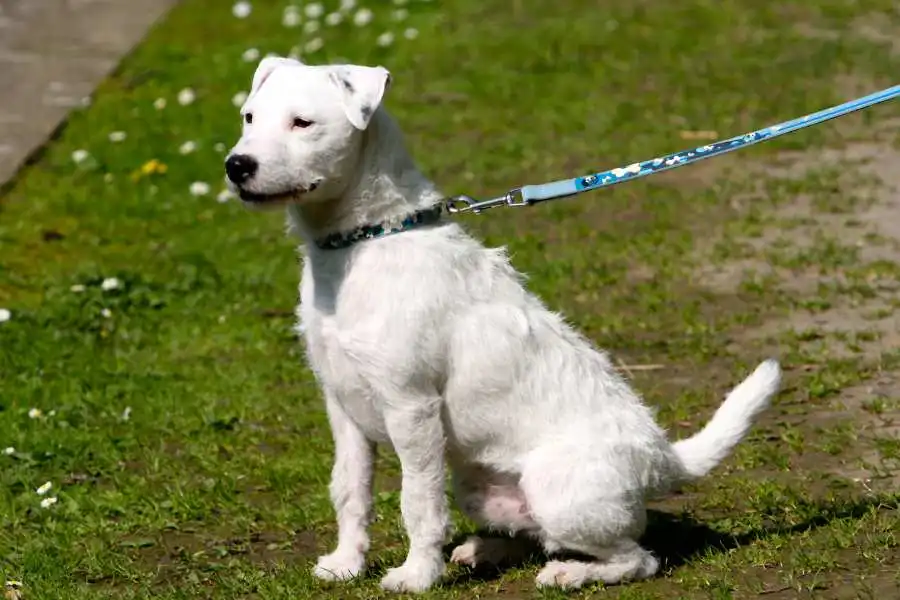
You can use a yard dog run to restrict the movement of your dog and, therefore, reduce the areas it urinates. Use this as a temporary solution as you train your dog to use its potty spot.
Learn The Best Hacks to Get Dog Hair Out Of Car and,
How To Get Rid Of Dog Hair On Clothes Easily And Fast
Conclusion
Neutralizing dog urine in the grass is essential to maintaining a healthy lawn. By following these tips, you can effectively neutralize dog urine in the grass and prevent it from killing your lawn. Remember to identify the problem areas, choose the appropriate neutralizing method, and take preventive measures.
FAQs
Q: What neutralizes dog urine on fake grass?
A: Fake grass isn’t affected by dog urine in a similar manner as real grass. However, you must still clean fake grass to deal with the odor. An enzymatic cleaner is the best option for neutralizing dog urine in fake grass.
Q: What causes dog urine to kill grass?
A: Dog urine is high in nitrogen, which can burn and kill grass if concentrated in one area. Additionally, dog urine is also acidic, which can cause damage to the soil and further harm the grass.
Q: Will baking soda neutralize dog urine on grass?
A: Sort of. Baking soda can neutralize dog urine on grass but is not as effective as when used to neutralize it on concrete, tiles, carpets, clothes, etc. You must still use water to dissolve the baking soda and spread it over the affected water.
Q: What are some natural remedies to neutralize dog urine in grass?
A: Some natural remedies to neutralize dog urine in grass include watering the affected area, planting urine-resistant grass, applying baking soda or lime to the affected area, using vinegar or lemon juice to neutralize the urine, and using soil amendments such as gypsum and compost.
Q: How can I prevent my dog’s urine from killing my lawn?
A: You can prevent your dog’s urine from killing your lawn by training your dog to urinate in designated areas and increasing your dog’s water intake.
Q: What type of grass is resistant to dog urine?
A: Fescue and perennial ryegrass are more resistant to dog urine than other types of grass.
Q: Can I use commercial products to neutralize dog urine in the grass?
A: Yes, enzymatic cleaners are commercial products that break down the proteins in dog urine and neutralize the odor. Additionally, commercial soil amendments are available to help neutralize dog urine in the soil and improve the grass’s health.
Q: How long does grass recovery from dog urine damage take?
A: The recovery time for grass damaged by dog urine can vary depending on the extent of the damage and the type of grass. In most cases, it can take several weeks for the grass to recover fully.
Q: How long does grass paint last?
A: It will depend on the grass paint you use. However, many of the organic pigments used to manufacture grass paint last between two and three months.
Q: Does grass paint kill grass?
A: No. The vast majority of grass paints on the market today use organic pigments that have little to no effect on the grass. Importantly, the paint is safe for both humans and pets and will not affect the health of your household.
